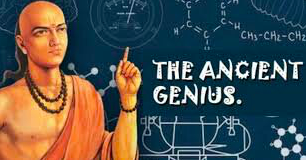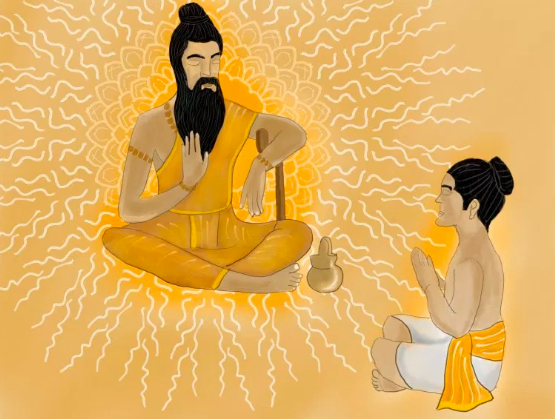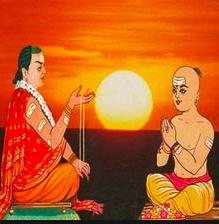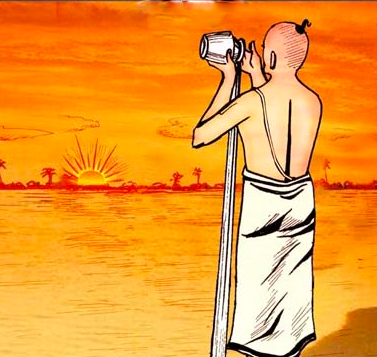
संस्कृत अनुबन्धनम्~ sanskŕt series - V
Rig-Veda(Maṇḍalā 3.62.10) ~ Viśvāmitra gāthinaḥ
Đ verse 3.62.10 has great importance in Sanātana Dhārma as the Gāyatrī Mantra.
Let's know about this in brief & also experience the Vedic recitation of this divine Hymn.
#Thread
Rig-Veda(Maṇḍalā 3.62.10) ~ Viśvāmitra gāthinaḥ
Đ verse 3.62.10 has great importance in Sanātana Dhārma as the Gāyatrī Mantra.
Let's know about this in brief & also experience the Vedic recitation of this divine Hymn.
#Thread
Vishvamitra (viśvā-mitra) is one of the most venerated rishis of ancient India.
A near-divine being, he is also credited as the author of most of Mandala 3 of the Rigveda, including Gāyatrī Mantra. Vishvamitra is said to have found Gāyatrī Mantra. It is a verse from a sukta of
A near-divine being, he is also credited as the author of most of Mandala 3 of the Rigveda, including Gāyatrī Mantra. Vishvamitra is said to have found Gāyatrī Mantra. It is a verse from a sukta of
Rigveda (Mandala 3.62.10).
Gāyatrī is the name of the Vedic meter in which the verse is composed.
Mandala 3 comprises 62 hymns, mainly to Agni & Indra and the Vishvedevas. Most hymns in this book are attributed to viśvāmitra gāthinaḥ.
The Puranas mention that only 24 rishis
Gāyatrī is the name of the Vedic meter in which the verse is composed.
Mandala 3 comprises 62 hymns, mainly to Agni & Indra and the Vishvedevas. Most hymns in this book are attributed to viśvāmitra gāthinaḥ.
The Puranas mention that only 24 rishis
since antiquity have understood the whole meaning of—and thus wielded the whole power of — Gāyatrī Mantra.
'Vishvamitra' is supposed to be the first, and 'Yajnavalkya' the last.
#LearnSanskrit
#SaveSanskrit
P.S: {will cover in detail the Gāyatrī Mantra in another #Thread}
'Vishvamitra' is supposed to be the first, and 'Yajnavalkya' the last.
#LearnSanskrit
#SaveSanskrit
P.S: {will cover in detail the Gāyatrī Mantra in another #Thread}

@RituRathaur @ikkmurugan @Mishti_in @shallakaul @BeenaPP1 @Gopalee67 @geetaraavi @armykafan @kachnarr @apparrnnaa @ushanirmala @lokagatha_ @bangadvedant @aneelgs @pburavalli @mysql_sync @deshmata @VamseeJuluri @HinduMediaWiki @vishalshahani11
• • •
Missing some Tweet in this thread? You can try to
force a refresh

















